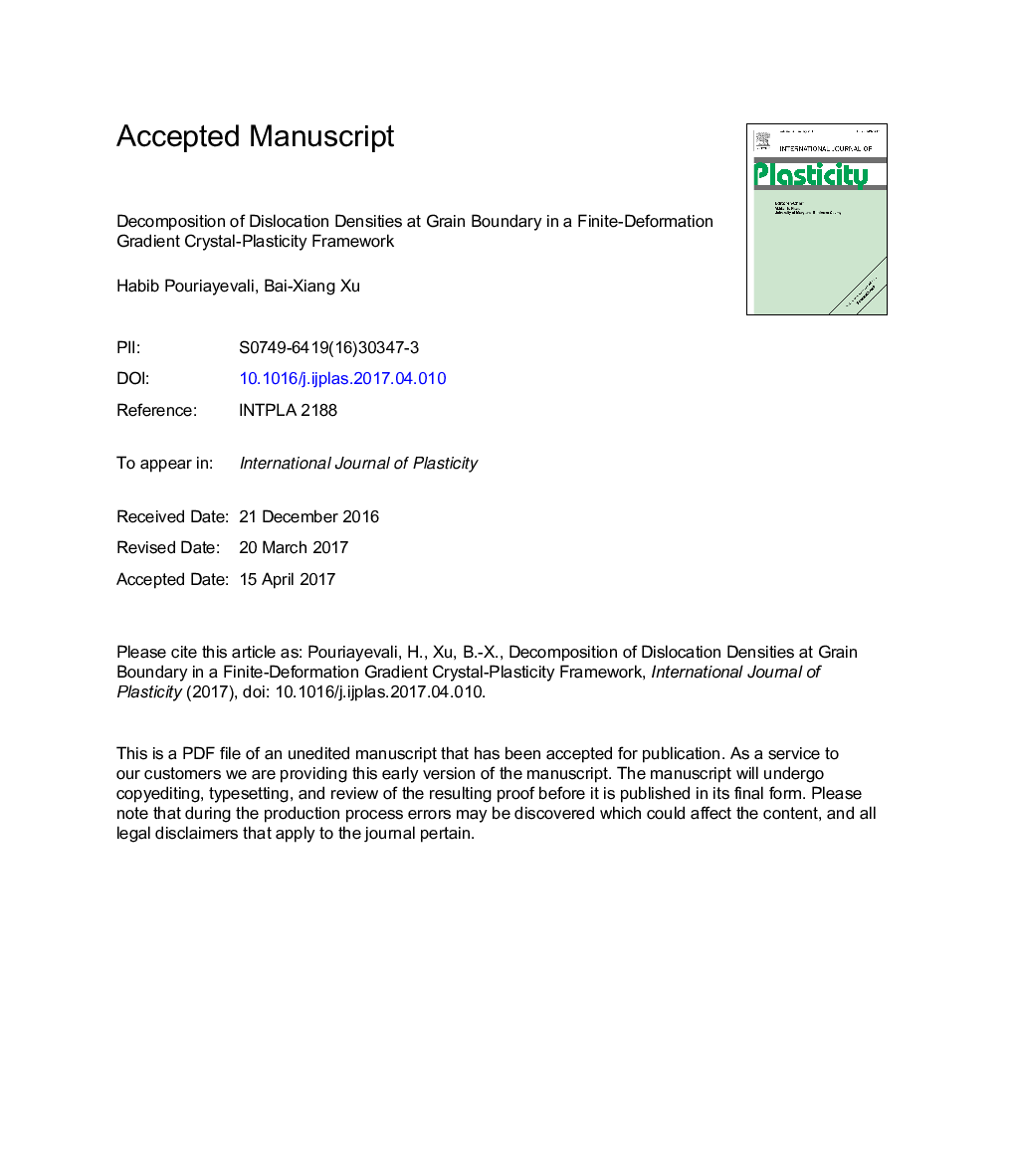| Article ID | Journal | Published Year | Pages | File Type |
|---|---|---|---|---|
| 5016746 | International Journal of Plasticity | 2017 | 41 Pages |
Abstract
The microscopically powerless boundaries are studied based on a finite-deformation gradient crystal-plasticity model which comprises energetic and dissipative governing components. The innovative feature in the present study includes a decomposition of dislocation densities at the boundary which provides a distinct observation of dislocation transmission through the boundary. Here, the relative orientation of the grain boundary to the grains is taken to account. Moreover, a misconception in the literature which renders micro-free GB as a GNDs-free interface is addressed. In addition, a boundary layer is employed and enforces the dislocations to flux only in the tangential direction at the micro-hard boundary as observed in experiments. Numerical results show the effect of powerless boundary conditions, transmission of plastic flows and accumulation of GNDs in multicrystals.
Related Topics
Physical Sciences and Engineering
Engineering
Mechanical Engineering
Authors
Habib Pouriayevali, Bai-Xiang Xu,
